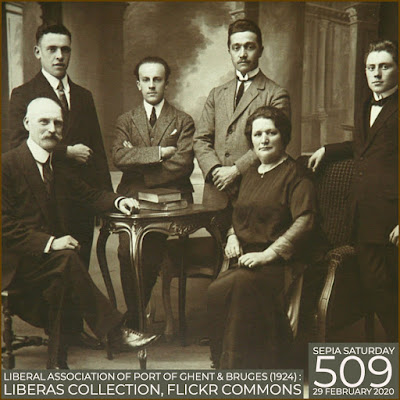It's not just the blaze of sound
that makes brass instruments
so arresting in music.
It's also the brilliance
of their coils of shiny metal tubing
that commands attention.
that makes brass instruments
so arresting in music.
It's also the brilliance
of their coils of shiny metal tubing
that commands attention.
Even on an overexposed photo of a brass septet,
the gold and silver gleam of brass
makes your eyes blink.
the gold and silver gleam of brass
makes your eyes blink.
To make a sound
requires the player's air
to flutter the lips into a brass mouthpiece.
This small vibration,
like the buzzing of a bumblebee,
resonates round and round,
growing steadily louder
until it finally escapes out the bell of the instrument.
requires the player's air
to flutter the lips into a brass mouthpiece.
This small vibration,
like the buzzing of a bumblebee,
resonates round and round,
growing steadily louder
until it finally escapes out the bell of the instrument.
Curiously this effect
looks the same
no matter if it's
a quiet melody
or a thundering fanfare.
So what dynamic is this brass quintet making?
Soft or loud?
looks the same
no matter if it's
a quiet melody
or a thundering fanfare.
So what dynamic is this brass quintet making?
Soft or loud?
As a brass instrument's bell
pointedly directs the sound,
sometimes it aims forward
like cornets and trombones.
Sometimes upward
like tubas and tenor horns.
Less common is backwards
like my instrument the French horn.
But in the 1850s-60s
another early configuration for brass saxhorns
placed the bell over the shoulder pointed backwards.
This let saxhorn bands march at the head of a parade
and still allow the troops who followed
to hear the tunes and feel the beat of the music.
This brass quartet, led by a side action rotary valve cornet,
has three over the shoulder horns,
a bass and two tenor saxhorns.
pointedly directs the sound,
sometimes it aims forward
like cornets and trombones.
Sometimes upward
like tubas and tenor horns.
Less common is backwards
like my instrument the French horn.
But in the 1850s-60s
another early configuration for brass saxhorns
placed the bell over the shoulder pointed backwards.
This let saxhorn bands march at the head of a parade
and still allow the troops who followed
to hear the tunes and feel the beat of the music.
This brass quartet, led by a side action rotary valve cornet,
has three over the shoulder horns,
a bass and two tenor saxhorns.
Brass might tarnish
but it won't corrode or wear away
like the silver on this ferrotype, aka tintype, photo.
but it won't corrode or wear away
like the silver on this ferrotype, aka tintype, photo.
* * *
The first image is of an unknown group of seven men on a simple 5 x 7 inch sepia tone print. With four standing and three kneeling they are outdoors in front of a background of trees and vines which gives the photo a very dark contrast, which I have corrected. The musicians have three cornets, a valve trombone, two types of tenor horns, and a tuba. There is a vaguely 1900-1910 American style about them, but they could be from anywhere in that time frame.
* * *
The brass quintet in the second image comes from an oversize cabinet photo. It is unusual because the five musicians are posed pretending to be playing. If they were actually making a sound we would see a subtle firm pursing of their lips. These fellas are barely kissing the mouthpieces.
The group has two cornets, tenor horn, valve trombone, and tuba. The three young men in bowler hats have such a strong resemblance, I think they may be brothers.
The photographer's name is embossed along the bottom of the dark green card mount. It's difficult to read so I've distorted the colors to get better contrast.
A. Wastvedt
Traveling Artist
Traveling Artist
Many early photographers worked as itinerant tradesmen serving rural communities by traveling with their camera and developing equipment by horse and wagon, or sometimes via the train lines on a private rail car. At a guess by his Scandinavian surname I would place this photographer somewhere on the great prairies of Minnesota, North/South Dakota, and Montana.
* * *
The third brass quartet appears in a rough tintype photograph, more correctly called a ferrotype. It is quite small, about 2¼ inches by 3½ inches, and very dark.
As each ferrotype photo is made by a single exposure of light to a thin silver collodion emulsion painted onto a metal sheet of iron not tin, no duplicates are possible. It also means that the image placed on the coated metal is backwards like a mirror's reflection. Left is right and right it left.
Magically the early cameras could pick up a lot of detail and with modern computer software I can easily improve the contrast and flip the image to correct the mirror effect.
Over the shoulder brass instruments were balanced on the left shoulder and the valve keys were pressed by the right hand. They remained popular with brass bands until the mid-1870s when improvements in piston valves and brass manufacturing made this cumbersome instrument obsolete.
Unfortunately the faces of the four musicians are scratched
so we can't know if they were smiling or frowning.
But at least their brass horns shine through the darkness.
This is my contribution to Sepia Saturday
where discussion of old photographs
is always taken very seriously.
where discussion of old photographs
is always taken very seriously.

























































